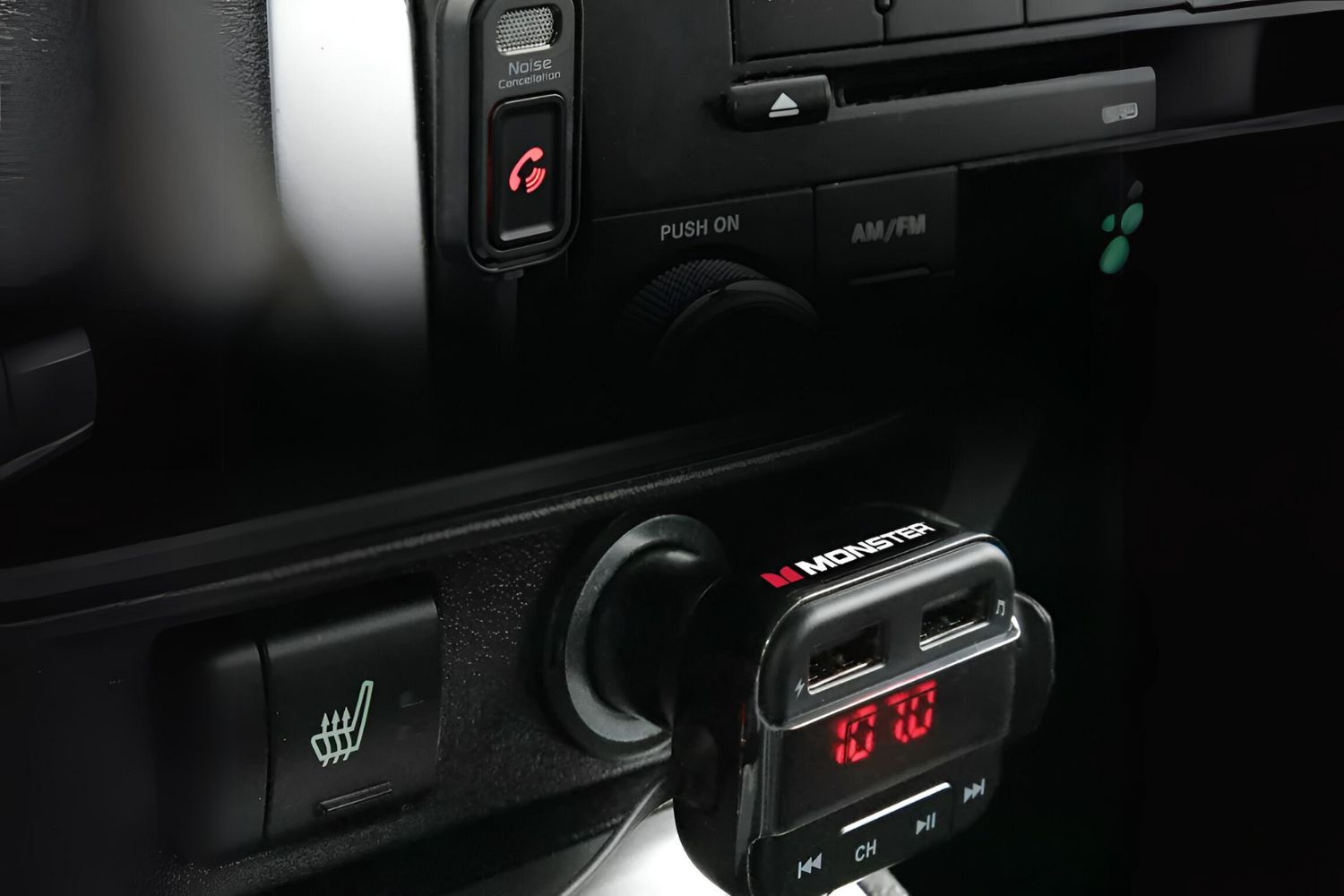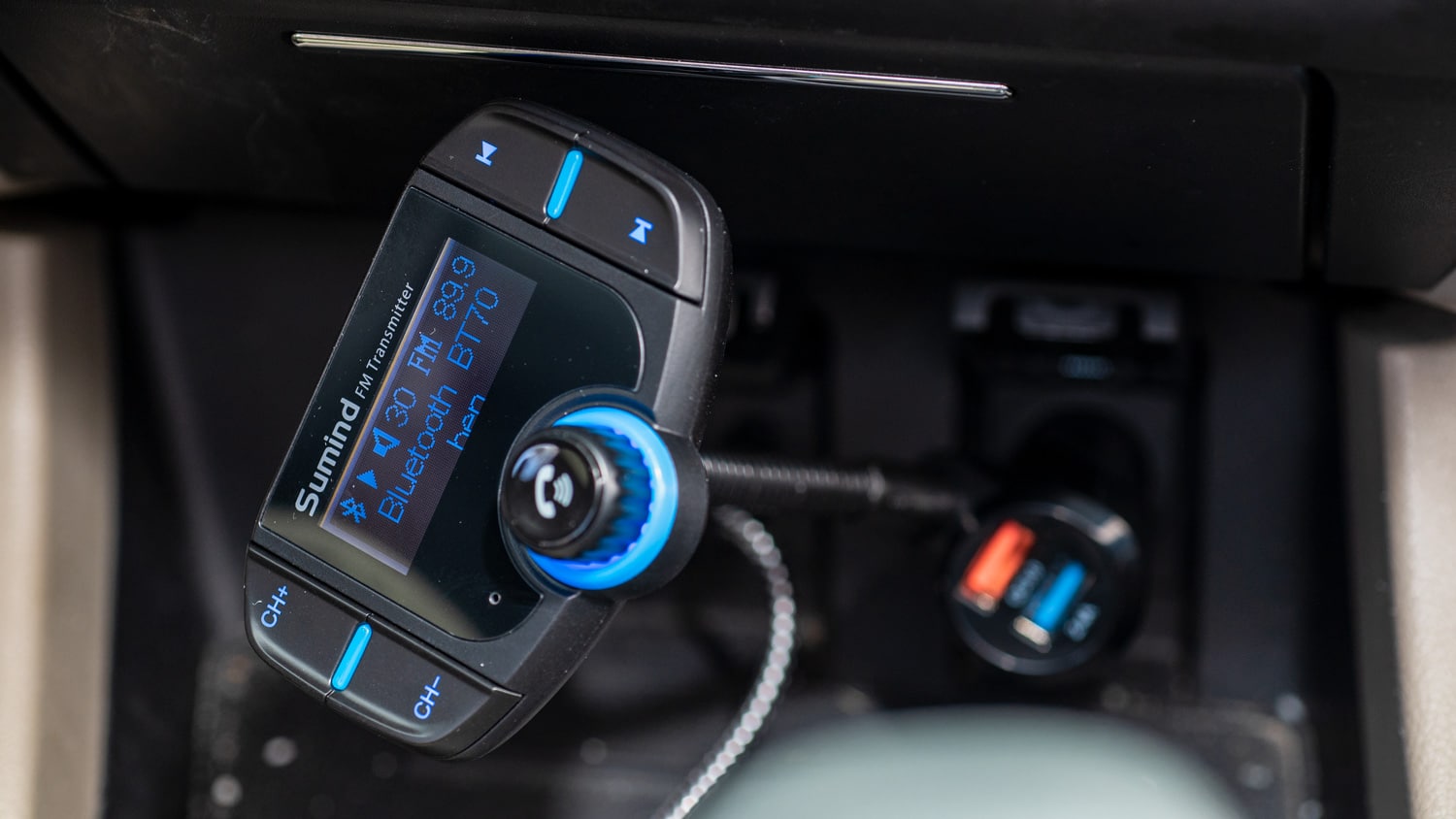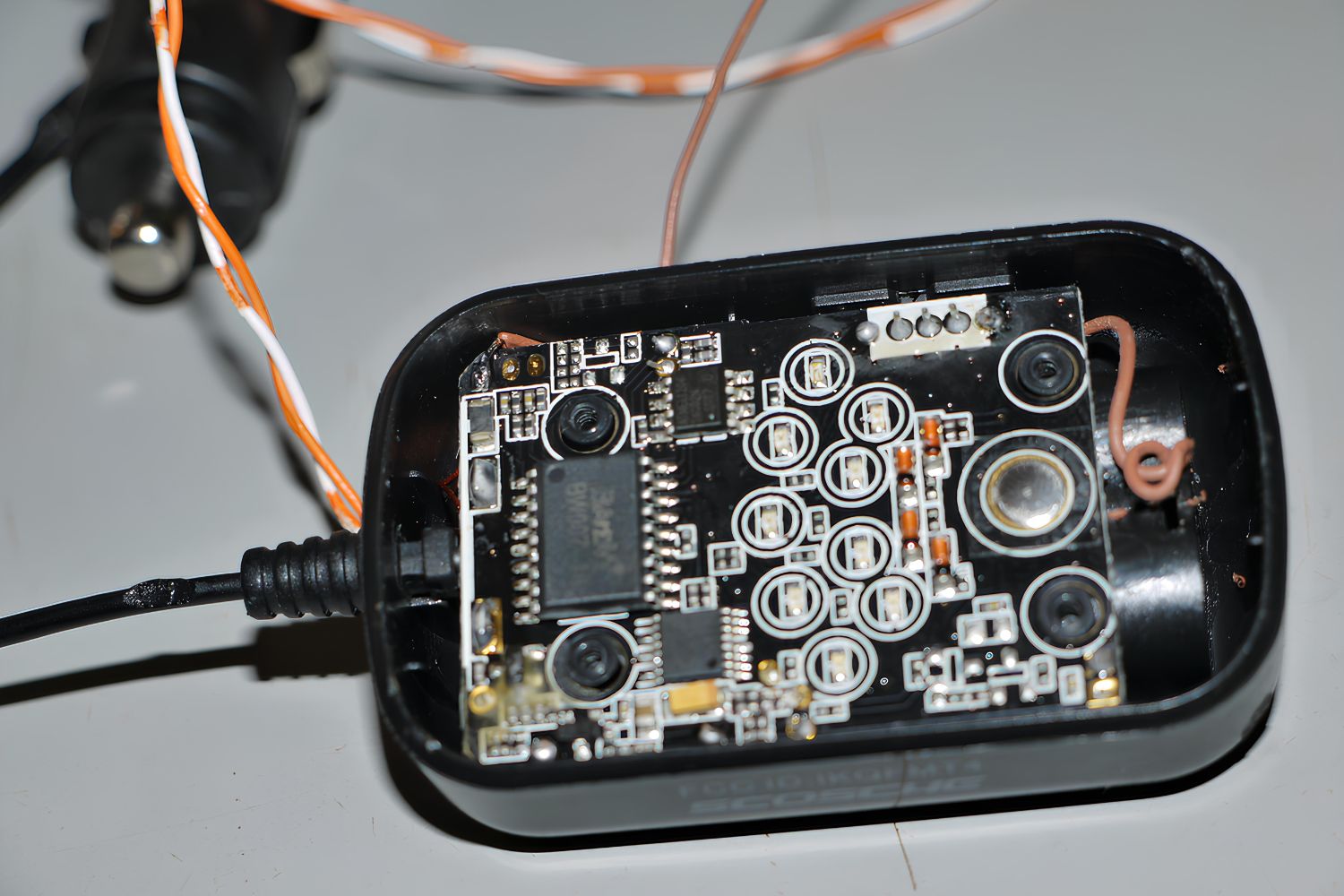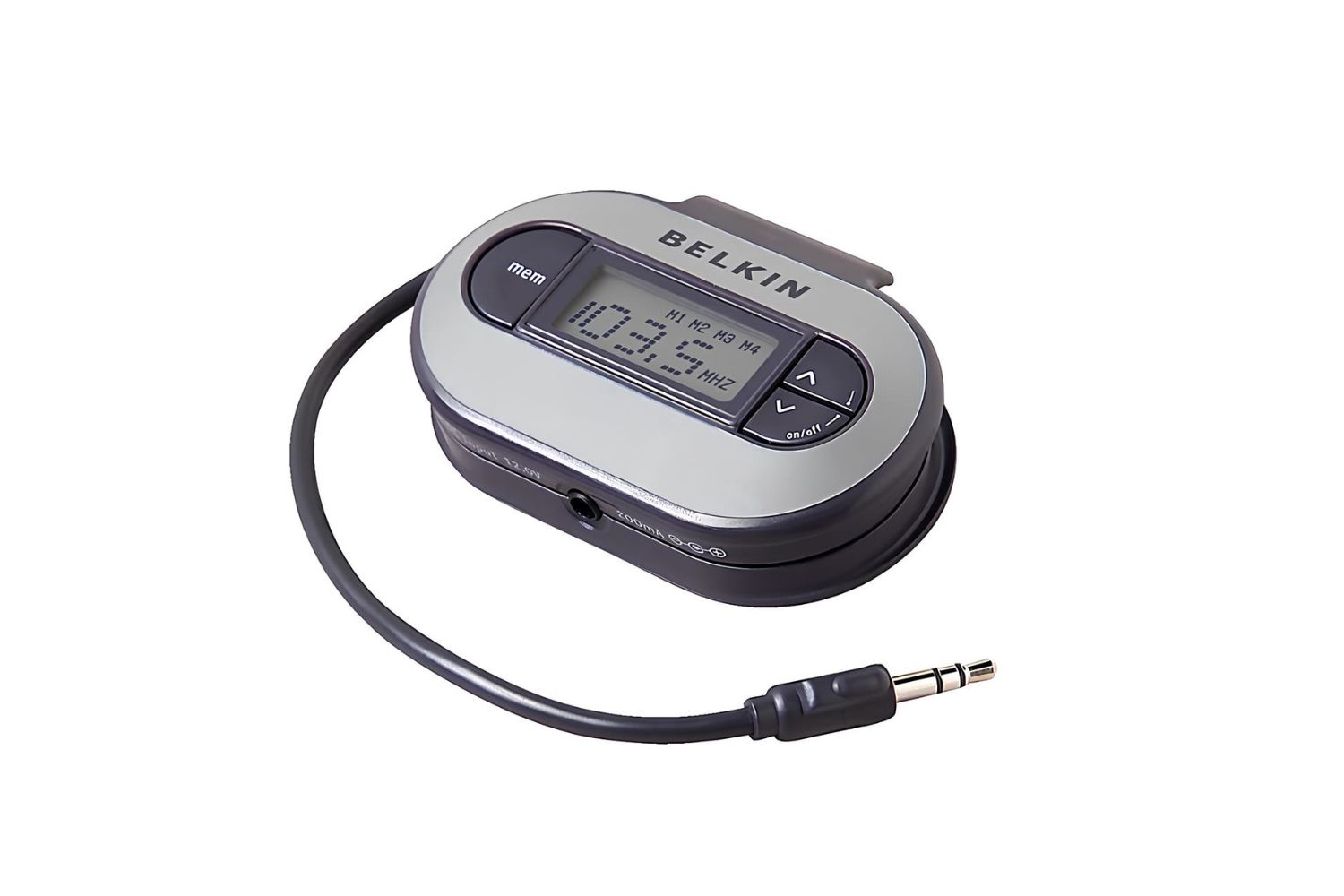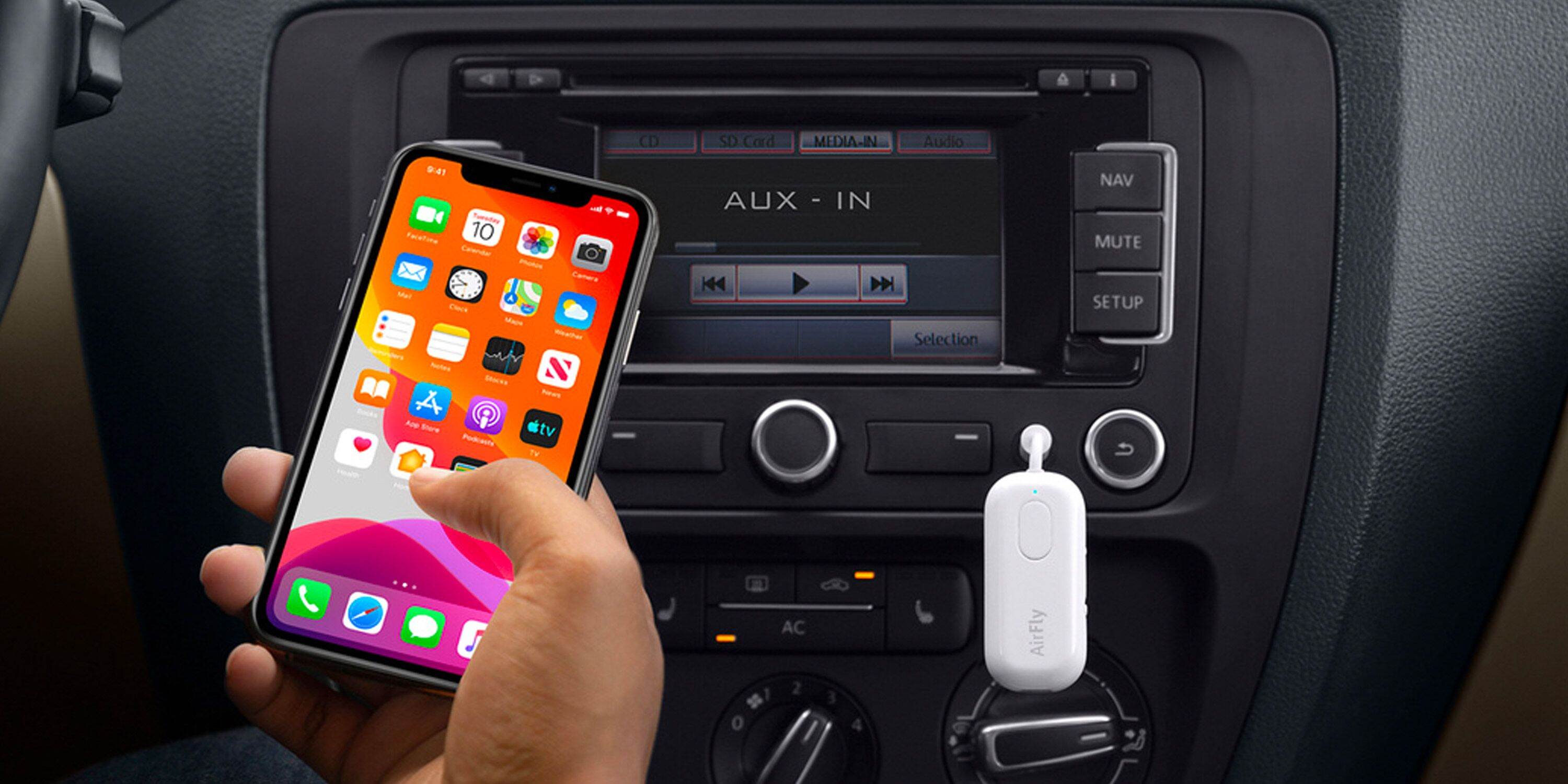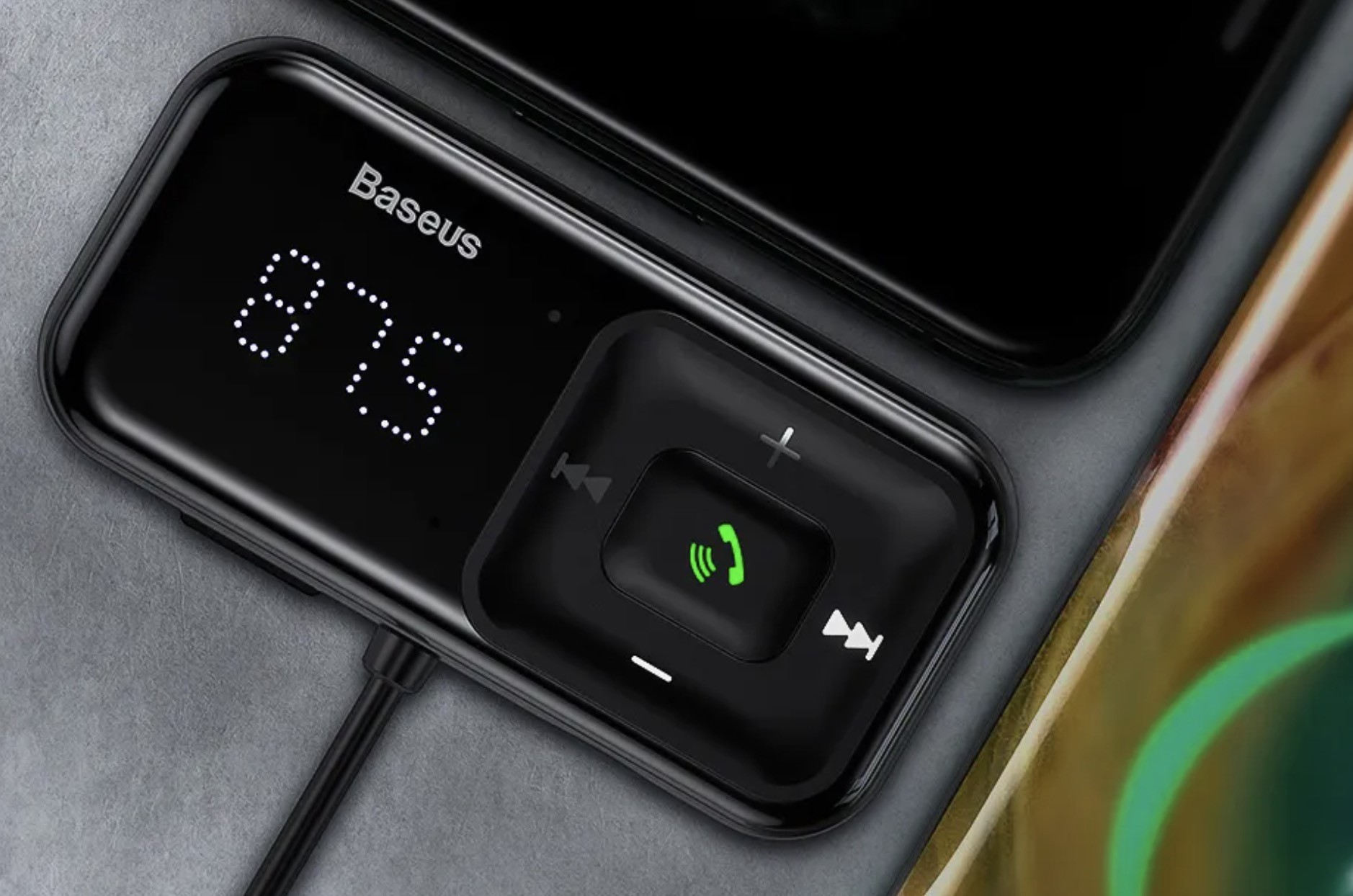Introduction
FM transmitters are invaluable devices that allow you to enjoy your favorite music, podcasts, or audiobooks through your car stereo. Whether you're on a road trip or simply commuting to work, these nifty gadgets offer a convenient way to stream audio from your smartphone to your car's sound system. However, like any electronic device, FM transmitters can encounter issues that disrupt their functionality.
In this comprehensive guide, we will delve into the intricacies of FM transmitters, exploring their inner workings and shedding light on the common problems that users may encounter. Additionally, we will provide a step-by-step troubleshooting process to help you reset your FM transmitter and restore seamless audio transmission in your vehicle.
Understanding the nuances of FM transmitters is crucial for troubleshooting and resolving any issues that may arise. By gaining insight into how these devices operate and the potential challenges they may face, you'll be better equipped to identify and address any malfunctions effectively.
So, let's embark on this journey to unravel the mysteries of FM transmitters and equip ourselves with the knowledge and skills needed to troubleshoot and reset these devices with confidence. Whether you're a tech enthusiast, a music aficionado, or simply someone who values a smooth and enjoyable driving experience, this guide is tailored to empower you in overcoming FM transmitter challenges and getting back to enjoying your favorite tunes on the road.
Understanding FM Transmitters
FM transmitters are compact electronic devices designed to broadcast audio signals from a portable audio device, such as a smartphone or MP3 player, to an FM radio receiver, typically in a car. These ingenious gadgets operate within the frequency modulation (FM) range, allowing users to wirelessly transmit audio content to their car stereo systems.
At the core of an FM transmitter lies a small microcontroller that processes audio input from the connected device and modulates it onto an FM carrier wave. This modulated signal is then transmitted through the air and received by the car's FM radio, effectively enabling users to listen to their preferred audio content through the vehicle's speakers.
The frequency range utilized by FM transmitters typically falls within the 88.1 to 107.9 MHz spectrum, with users being able to select a specific frequency within this range to minimize interference from local radio stations. This flexibility in frequency selection is a key feature that allows users to find an optimal transmission frequency, ensuring clear and uninterrupted audio playback.
Furthermore, FM transmitters are equipped with a power source, usually a built-in rechargeable battery or a direct power connection to the vehicle's electrical system. This power supply is essential for sustaining the operation of the FM transmitter and facilitating the seamless transmission of audio signals.
In essence, FM transmitters serve as a bridge between modern portable audio devices and traditional FM car radios, providing a wireless and convenient solution for integrating personal audio content into the driving experience. Understanding the fundamental principles of FM transmitters sets the stage for effectively troubleshooting and resolving any issues that may arise during their use.
By comprehending the intricate interplay of audio processing, modulation, and wireless transmission within FM transmitters, users can gain a deeper appreciation for the technology behind these devices. This knowledge not only empowers individuals to troubleshoot and reset FM transmitters with confidence but also fosters a greater understanding of the seamless audio connectivity that these devices facilitate in the automotive environment.
Common Issues with FM Transmitters
FM transmitters, despite their convenience and utility, are susceptible to a range of common issues that can impede their performance. Understanding these prevalent challenges is pivotal for effectively troubleshooting and resetting FM transmitters. Here are some of the most frequently encountered issues:
-
Interference and Static: One of the primary issues users face with FM transmitters is interference from other radio signals, resulting in static or poor audio quality. This interference can stem from nearby radio stations or electronic devices emitting radio frequency signals, disrupting the clear transmission of audio content.
-
Power Supply Problems: FM transmitters rely on a stable power source to function optimally. Issues related to power supply, such as a drained battery or faulty connection to the vehicle's electrical system, can lead to inconsistent performance or complete failure of the transmitter.
-
Frequency Conflicts: Selecting an FM frequency that is already occupied by a local radio station can lead to signal overlap and interference, causing distorted audio playback. Users may encounter difficulties in finding an available frequency that ensures uninterrupted transmission.
-
Audio Quality Degradation: Over time, FM transmitters may experience a decline in audio quality, manifesting as muffled sound, fluctuating volume, or distortion. This degradation can be attributed to factors such as signal interference, aging transmitter components, or suboptimal audio input settings.
-
Connection Issues: Establishing a reliable connection between the FM transmitter and the audio source, such as a smartphone or MP3 player, is crucial for seamless operation. Issues related to loose connections, damaged cables, or incompatible audio devices can hinder the transmission of audio signals.
-
Device Compatibility: Some FM transmitters may exhibit compatibility issues with certain audio devices, leading to erratic behavior or the inability to establish a stable connection. This can be attributed to variations in audio output levels, connector types, or communication protocols between the transmitter and the audio source.
By recognizing these prevalent issues, users can proactively troubleshoot and address the underlying causes of FM transmitter malfunctions. The subsequent steps in this guide will provide a systematic approach to resetting FM transmitters, effectively mitigating these common issues and restoring optimal functionality for an enhanced audio experience on the go.
Step 1: Check Power Source
Ensuring a stable and reliable power source is fundamental to the seamless operation of an FM transmitter. Without adequate power, the transmitter may exhibit erratic behavior, intermittent connectivity issues, or fail to function altogether. Therefore, the first step in troubleshooting an FM transmitter involves a thorough assessment of its power source.
Battery Status:
If your FM transmitter is battery-powered, begin by checking the status of the internal battery. Ensure that the battery is sufficiently charged to support uninterrupted transmission. If the transmitter has been in use for an extended period, it's advisable to recharge or replace the battery as needed to maintain optimal performance.
Power Connection:
For FM transmitters that draw power from the vehicle's electrical system, inspect the connection between the transmitter and the power source. Verify that the power cable is securely plugged into the vehicle's power outlet or USB port. Additionally, examine the condition of the power cable for any signs of damage or wear that may impede the flow of electricity to the transmitter.
Fuse Inspection:
In the case of direct power connection, such as through the vehicle's cigarette lighter socket, it's essential to check the fuse associated with the power outlet. A blown fuse can disrupt the flow of power to the FM transmitter, leading to operational issues. If the fuse is found to be faulty, replace it with a new fuse of the appropriate rating to restore the power supply to the transmitter.
Alternative Power Source:
In instances where the primary power source is compromised, consider utilizing an alternative power supply, such as a portable power bank with compatible output specifications. This temporary power source can serve as a troubleshooting measure to isolate power-related issues and determine if the original power source is the root cause of the transmitter's malfunction.
By meticulously examining and addressing the power source of the FM transmitter, users can effectively eliminate power-related impediments and lay the groundwork for subsequent troubleshooting steps. A stable and robust power supply forms the cornerstone of reliable transmitter performance, setting the stage for a successful reset and restoration of seamless audio transmission in the vehicle.
Step 2: Verify Frequency Settings
The frequency settings of an FM transmitter play a pivotal role in determining the clarity and stability of audio transmission to the car stereo. Given the crowded radio frequency spectrum, it is essential to meticulously verify and optimize the transmitter's frequency settings to minimize interference and ensure uninterrupted playback of audio content.
Frequency Selection:
Begin by accessing the frequency adjustment controls on the FM transmitter. Most transmitters feature a digital display or manual tuning mechanism that allows users to select a specific FM frequency for transmission. It is imperative to choose a frequency that is unoccupied by local radio stations to avoid signal overlap and interference. Commonly utilized frequencies fall within the 88.1 to 107.9 MHz range, offering a spectrum for users to explore and identify an optimal transmission frequency.
Scanning for Interference:
Once a frequency is selected, it is prudent to scan the chosen frequency for potential interference. Activate the FM transmitter and tune the car stereo to the selected frequency. Listen attentively for any signs of static, distortion, or overlapping audio signals, which may indicate interference from nearby radio stations or electronic devices. If interference is detected, consider adjusting the frequency slightly to find a clearer channel for transmission.
Signal Strength Evaluation:
Assess the signal strength of the chosen frequency by observing the clarity and consistency of audio playback. A strong and stable signal manifests as clear, distortion-free audio, indicative of an optimal transmission environment. Conversely, a weak or fluctuating signal may point to environmental factors or frequency conflicts that impede seamless audio transmission. Fine-tune the frequency settings to achieve an optimal balance between signal strength and minimal interference.
Environmental Factors:
Consider environmental variables that may impact frequency settings, such as geographical location, urban density, and proximity to radio towers. Urban areas with dense radio traffic may necessitate more meticulous frequency selection to avoid signal clashes. Additionally, geographical terrain and atmospheric conditions can influence signal propagation, necessitating periodic adjustments to frequency settings for consistent audio transmission.
By meticulously verifying and optimizing the frequency settings of the FM transmitter, users can mitigate interference, maximize signal clarity, and establish a robust foundation for seamless audio transmission in the vehicle. This meticulous approach to frequency management sets the stage for a successful reset of the FM transmitter, paving the way for an enhanced in-car audio experience.
Step 3: Ensure Proper Connection
A crucial aspect of troubleshooting FM transmitters involves ensuring a reliable and secure connection between the transmitter and the audio source, typically a smartphone, MP3 player, or another portable device. A stable connection is essential for the seamless transmission of audio signals to the car stereo, and any issues related to connectivity can significantly impact the performance of the FM transmitter.
Cable Inspection:
Begin by meticulously inspecting the audio cable that connects the FM transmitter to the audio source. Check for any signs of wear, fraying, or damage along the length of the cable. Even minor damage can lead to intermittent connectivity, audio distortion, or complete signal loss. If any issues are detected, consider replacing the cable with a high-quality, compatible replacement to ensure a robust connection.
Connector Compatibility:
Verify the compatibility of the audio connector used by the FM transmitter with the audio output port of the connected device. Different audio devices may feature varying connector types, such as 3.5mm audio jacks or USB-C ports. Ensuring that the connector on the transmitter aligns seamlessly with the audio output port of the device is essential for establishing a secure and stable connection.
Secure Attachment:
Ensure that the audio cable is securely attached to both the FM transmitter and the audio source. A loose or unstable connection can lead to intermittent audio playback, signal dropouts, or static interference. Confirm that the cable is firmly plugged into the respective ports on both the transmitter and the audio device, providing a snug and reliable connection.
Compatibility Testing:
In cases where compatibility issues persist, consider testing the FM transmitter with alternative audio devices to identify any device-specific connectivity issues. By connecting the transmitter to different audio sources, users can isolate the root cause of connectivity problems and determine whether the issue lies with the transmitter, the original audio device, or the interplay between the two.
Interference Mitigation:
Minimize the potential for external interference by positioning the FM transmitter and the connected audio device away from electronic devices that emit radio frequency signals. Proximity to devices such as smartphones, tablets, or electronic accessories can introduce electromagnetic interference, disrupting the audio transmission. Optimal positioning can mitigate interference and enhance connectivity stability.
By meticulously ensuring a proper and robust connection between the FM transmitter and the audio source, users can effectively address connectivity issues and lay the groundwork for a successful reset of the transmitter. A secure and stable connection forms the bedrock of reliable audio transmission, setting the stage for an enhanced in-car audio experience devoid of connectivity-related disruptions.
Step 4: Resetting FM Transmitter
Resetting an FM transmitter is a strategic process aimed at restoring the device to its default or initial state, effectively clearing any lingering issues or malfunctions that may have arisen during its operation. This step is instrumental in troubleshooting persistent problems and rejuvenating the transmitter for seamless audio transmission in the vehicle.
The reset procedure varies across different FM transmitter models, and it typically involves a combination of specific actions to initiate the reset process. While the exact steps may differ, the overarching objective remains consistent: to recalibrate the transmitter and eliminate any irregularities that may have compromised its performance.
Common reset methods for FM transmitters may include a combination of button sequences, power cycling, or accessing reset functionalities through dedicated controls or settings. It is advisable to consult the user manual or manufacturer's guidelines specific to your FM transmitter to ascertain the precise reset procedure tailored to your device.
Before initiating the reset process, it is prudent to disconnect the FM transmitter from the power source and the audio device to prevent any potential electrical surges or data corruption during the reset. Once the transmitter is isolated, proceed to execute the reset sequence as per the manufacturer's instructions, ensuring adherence to the prescribed steps to achieve a successful reset.
Upon completing the reset process, reestablish the power and audio connections to the FM transmitter and the audio source. Power on the transmitter and configure the frequency settings as necessary, aligning them with the optimal parameters for clear and uninterrupted audio transmission.
The reset procedure serves as a pivotal intervention to address persistent issues with the FM transmitter, offering a fresh start for the device to function optimally. By systematically resetting the transmitter, users can effectively clear any underlying irregularities, restore default configurations, and recalibrate the device for enhanced performance.
Overall, the reset process represents a proactive measure to troubleshoot and rejuvenate the FM transmitter, setting the stage for a seamless and enjoyable in-car audio experience.
Conclusion
In conclusion, the troubleshooting and resetting of FM transmitters encompass a systematic and meticulous approach aimed at addressing common issues, restoring optimal functionality, and revitalizing the in-car audio experience. By delving into the intricacies of FM transmitters, users gain a deeper understanding of the technology underpinning these devices, empowering them to navigate and overcome potential challenges with confidence.
Throughout this comprehensive guide, we have explored the fundamental principles of FM transmitters, shedding light on their inner workings, common issues, and step-by-step troubleshooting process. From power source assessment to frequency optimization, connection validation, and the strategic reset procedure, each step is designed to equip users with the knowledge and tools needed to effectively address FM transmitter malfunctions.
The prevalence of issues such as interference, power supply problems, frequency conflicts, audio quality degradation, connection issues, and device compatibility underscores the importance of a structured troubleshooting approach. By recognizing these challenges and implementing the prescribed troubleshooting steps, users can proactively mitigate disruptions and restore seamless audio transmission in their vehicles.
Furthermore, the reset process serves as a pivotal intervention, offering a fresh start for FM transmitters to recalibrate and rejuvenate their performance. By adhering to manufacturer-specific reset procedures and leveraging the insights gained from this guide, users can effectively clear underlying irregularities and restore default configurations for enhanced transmitter functionality.
Ultimately, the successful troubleshooting and resetting of FM transmitters culminate in an enriched in-car audio experience, free from the impediments that may have previously hindered seamless audio transmission. Whether embarking on a road trip, commuting to work, or simply enjoying a leisurely drive, the revitalized FM transmitter ensures that users can savor their favorite music, podcasts, and audiobooks with clarity and consistency.
By embracing the knowledge and strategies presented in this guide, users are empowered to navigate the intricacies of FM transmitters, troubleshoot common issues, and reset these devices with proficiency. This comprehensive understanding fosters a seamless and enjoyable in-car audio experience, reinforcing the invaluable role of FM transmitters in integrating personal audio content into the driving environment.







